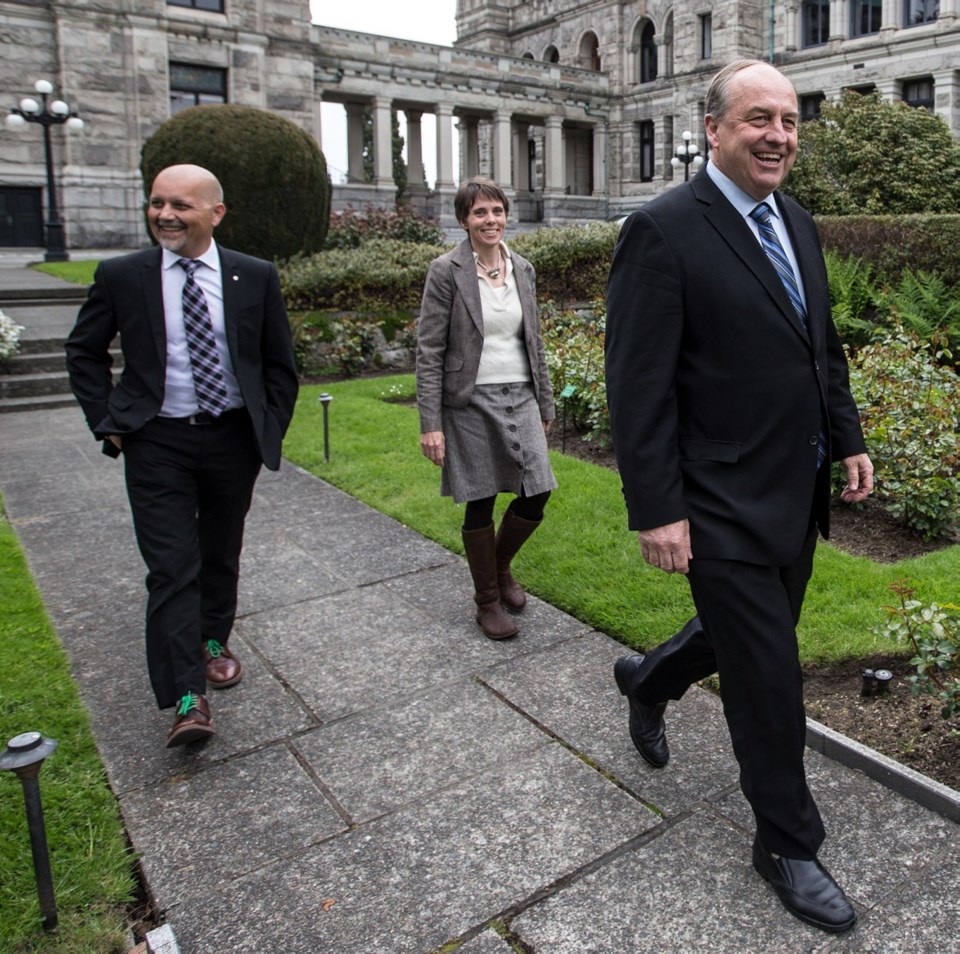The B.C. Green Party is set to achieve official party status, but it comes at a cost.
The funding formula means the party could be working with almost $200,000 less, depending on some variables.
On the flip side, said MLA Adam Olsen, official party status will give the party new resources, spots on committees and more chances to ask questions of the government on a regular basis.
“Any time that multiple people get elected under the same party banner, they need the resources and legislative opportunities to function,” said Olsen, who represents Saanich North and the Islands. “Currently, the way it’s been set up, it is very difficult for small parties to be established.
“This is not about the Greens,” he added.
“This is about two [or more] individuals who get elected under a banner having the same opportunity to fully operate in the legislature.”
Last week, Attorney General David Eby introduced amendments to the Constitution Act that would give official party status to groups with two or more MLAs. The current requirement is a minimum of four MLAs.
The Greens have three.
As Independents, the Greens receive $175,000 annually per MLA to support legislative office operations, plus $2,000 in office capital expenses. Each MLA also gets the standard MLA salary of $106,000 each per year, for a total of $849,000 annually.
The change means each MLA can look forward to a raise.
Andrew Weaver would receive a 25 per cent boost, or $26,470, as party leader, while Sonia Furstenau and Olsen would each receive an extra 10 per cent, or $10,588, as house leader and party whip.
Party status also means a caucus budget: $87,500 for each member to support office operations, plus $25,000 for caucus capital expenses.
Between salaries and the caucus budget, that’s a total of about $653,000.
One extra variable is new office space: If Weaver decides he wants a secondary Vancouver office, he’s entitled to funding to cover a 570-square-foot office lease.
(For reference: The 2,892-square-foot office space used by the Liberal Party in Vancouver costs about $16,000 per month, plus about $2,000 to $3,000 in annual maintenance costs. The leader of the Official Opposition is entitled to a larger space than the leader of the third party.)
The funding isn’t set in stone, however, and the Green Party will have to make a presentation to the legislative assembly management committee to demonstrate costs. Given that the numbers were set in 1993, some changes are likely.
The last time three official parties were elected to the legislative assembly was 1991, when the Social Credit Party won seven seats, behind the NDP’s 51 and the Liberals’ 17.
Several legislative assemblies have included MLAs elected under party banners but operating as Independents, including two Reform Party members and one Progressive Democrat in 1996, and two New Democrats in 2001.
Gaining official party status was a must-have in the Green’s agreement to prop up the minority NDP government. “This is about recognizing the fact that when two people get elected under the party banner, they are acknowledged,” Olsen said.
“I got elected under the Green Party banner and every time my name comes up on the screen [during question period], it says ‘Independent,’ which is technically the case, but I ran under a platform with colleagues. So I think it’s time for this to occur.”



